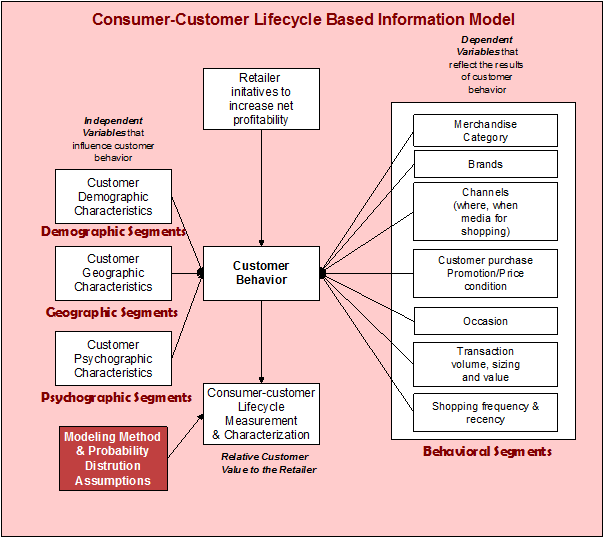Theme Concepts The Customer Theme and the Consumer-Customer Journey Theme contain most of the new extensions implemented in ARTS ODM V7.0. These two themes enable retailers to adapt their information structures and content to a new customer-centered approach to measuring and managing the retail enterprise. Business Rationale Behind ARTS Customer Data Modeling StrategyThere are lots of buzzwords and platitudes about "customer centricity", "customer focus", etc. The challenge for retailers now is how to design and execute a strategy that will grow their business in a new era where consumers and customers own the initiative in creating demand for products and services. ARTS recognizes the need to provide new information models and approaches to help retailers master new strategies as well as retain legacy strategies that work well. The traditional retail organization and culture is built around the merchants and buyers as the primary initiators of product, pricing, promotion, placement and relationship decisions. There are a number of other retail organization functions involved in extending and supporting merchandiser/buyer decisions. They are important but assume a role as enablers and executors of retail strategy. The ARTS data model supports this kind of legacy retail orientation and will continue to do so. The customer changes and revised strategic approach to retail and the data model changes they engender are additive. This means that retailers that choose not to reorient their organization and culture around their customers can benefit from using the ARTS data model as a foundation for managing retail information. The merchandiser/buyer centric retail organization and culture reflects the 20th century push model to creating consumer demand. It assumes that consumers will buy what retailers offer. This model of retail is no longer effective for a lot of reasons having to to with shifting demographics, changes in consumer financial capacity, shifts in technology and broad access to information and more. As noted earlier, today's consumers own the initiative in making purchasing decisions. To grow, retailers have to orient their culture and organizations around consumers needs, wants and preferences. This response to consumer shifts retailing from a push model to a pull model that transfers many merchandiser/buyer choices to the consumer. To succeed in this kind of new consumer-dominated ecosystem, retailers have to master new skills, systems, processes and cultural traits that enable them to sense, serve and satisfy consumers. This requires creating information systems that can capture, identify, name, describe and analyze consumers and their wants. The extensive additions and changes introduced in ARTS ODM V7.0 are designed to help retailers address this issue for prospective and current customers. Thinking Framework For ARTS Consumer-Customer Data Model ExtensionsThe diagram Thinking Framework Behind ARTS Consumer-Customer Related themes encapsulates the key parts of a consumer-centered information model. This approach places the consumer-customer at the center of retail strategy. The key components of this model include: •Independent variables that describe consumers-customers innate characteristics independently of observed behavior. This includes demographic, psychographic, geographic and other portrayals of consumers; •Dependent variables that describe consumer behavior and actions. The term dependent means that the observed data is derived from what customers do in reaction to retailer demand generation initiatives; •Retailer initiatives are the decisions and actions retailers execute to generate consumer demand for their products and services. Retailer initiatives implement the product, pricing, promotion, place and relationship business strategy of a retailer; •Consumer-customer lifecycle model creates a state model that enables retailers to organize independent variables, dependent variables and retailer initiatives into a story line. The story line puts the raw facts and figures of these three components into a context to help retailers better understand and serve customers; and •Modeling method and probability distributions enable retailers to portray unobserved customer actions (particularly for forecasting) to help them anticipate future consumer-customer needs, wants and preferences. Figure 8 - Thinking Framework Behind the ARTS Consumer-Customer Related Themes
The ARTS ODM V7.0/7.1 customer extensions provide the entities, relationships and attributes that enable retailers to capture, store and analyze customer information to support their strategic reorientation to customer-centered retailing. Customer Retail Theme ContentsThe Customer Retail Them encompasses: •Detailed customer demographic information; •Detailed customer psychographic information; •Detailed customer geographic information; •Detailed customer interest and activity information; •Detailed customer behavioral information (derived from retail transactions); •Detailed customer order and order settlement information; anonymous •Detailed customer account information. •Anonymous customer information The ARTS treatment of customers will be greatly extended in future versions of the Operational Data Model. |
